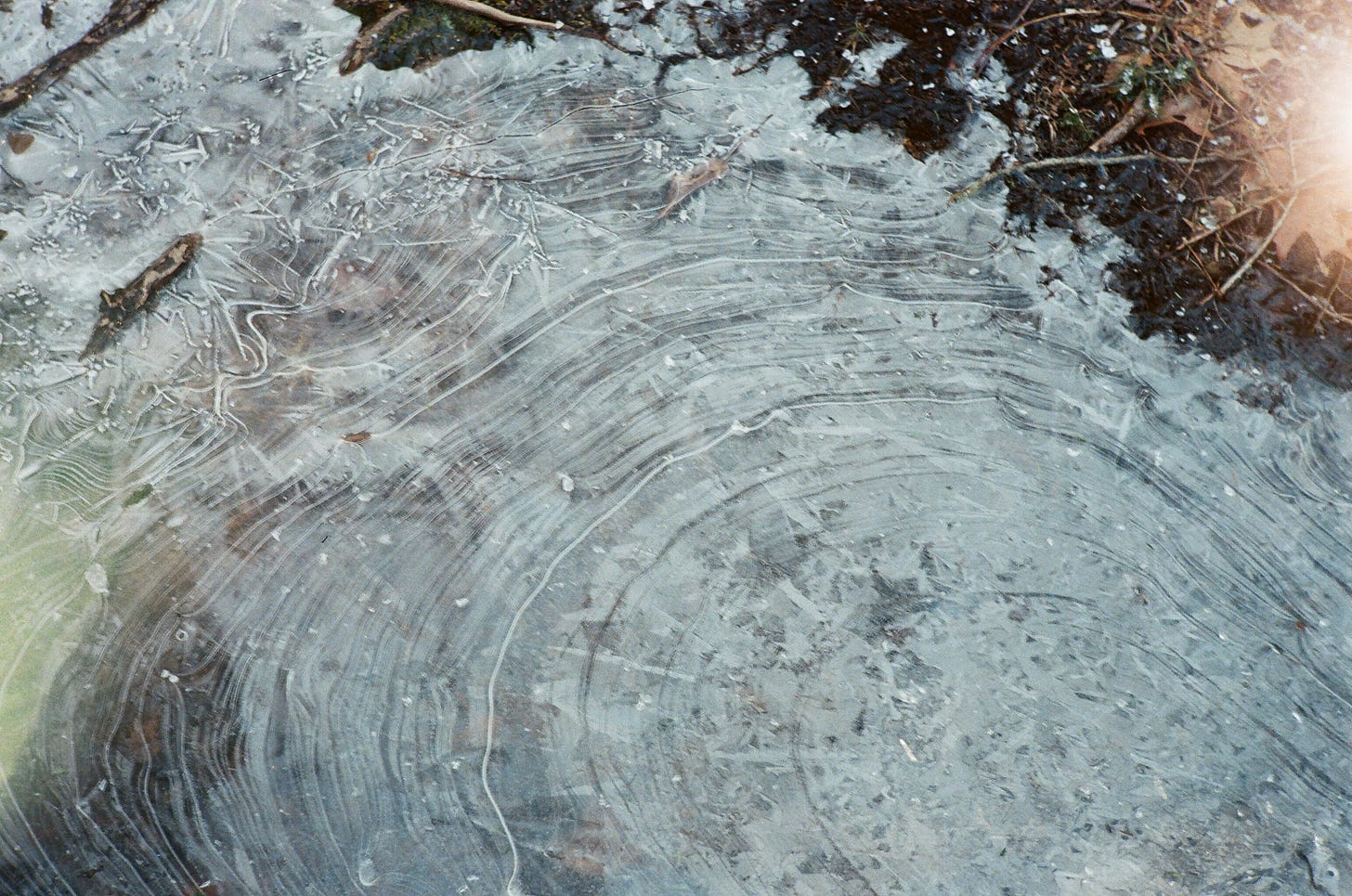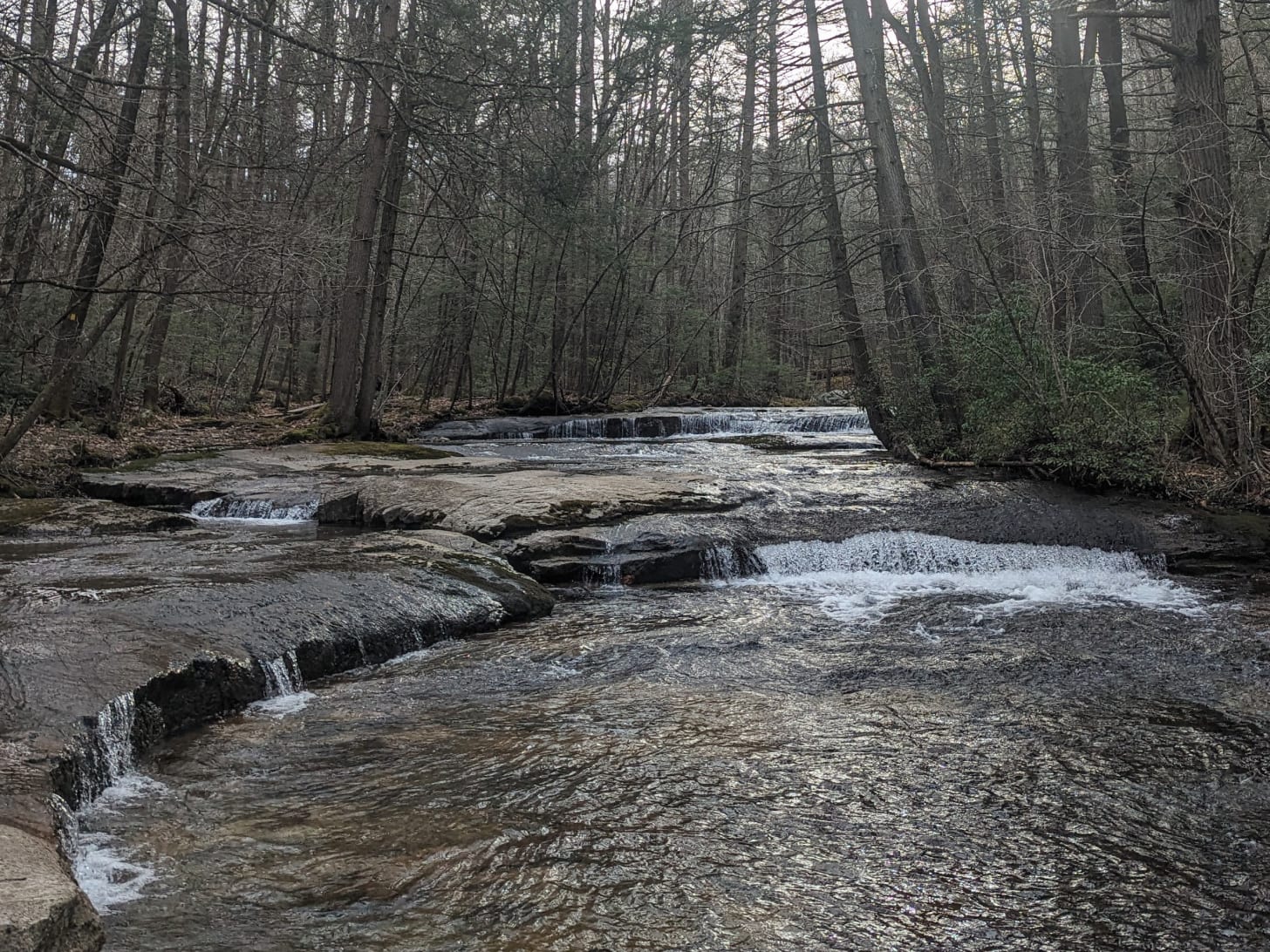Disrupting the Memory Disrupters
When there are plenty of things that get in the way, here are some things to help memory flow.
I took this photo a few weeks ago just as the last of the ice was thawing here in the Catskills. Now, in the cool of a slow-transitioning, late-April spring, water flows. Water: a symbol of emotion, inseparable from memory. In a world daily defined by suffering, can emotion and memory flow as the water does?
Some people say they have a bad memory, and entrust others to tell versions of what they can’t recall. Sometimes there is no one else, and the possibility of holding memory alone seems slim. We get stuck without memory. Conversely, we can commit our whole being to memory, whether that is of a traumatic event or a lost loved one. Our energy can bet stuck this way too, martyred for a past that we’re afraid no one else will remember enough.
Memory keeping is hard.
Rarely, though, are any of us inherently bad at remembering. Most often, something gets in the way, encasing memory in ice and preventing it from its natural flow. There are of course external disruptors to memory who, for various reasons, want to control and suppress certain narratives. Maybe they are abusive. Maybe they are afraid of their own pain. Maybe they want to pretend life can be free from harm and therefore forcibly deny harm where it happens. However much we work to address those forces externally, we also have to confront where they exist internally. It is a fact that they never just exist outside — we internalize these memory disruptors so cleverly that they become a part of our inner landscape and sometimes we don’t even notice them, or what they’re keeping us from.
It’s important to notice our inner memory disruptors as just that: parts in a landscape, in relations to other parts. And all of these parts can move.
Movement is an antidote to psychic stuck-ness. One of the ways we can create psychological movement of our inner self-states is by imbuing objects with the energies inside us and literally — simply — moving these objects around.
Here’s something that helps. It’s a little bit IFS (Internal Family Systems), a little bit Family Constellation, and a lot of subtle body energy:
When you’re ready, find some neutral objects like rocks, pinecones, random piles of string, or even candy. You’ll want about 4-5 things total, and its better if they are slightly different from each other. One at a time, hold them in your hand and identify them as parts of you. What are you like when you’re stuck? A child? Stupid? Depressed? Isolated? Name that part accordingly. Now, it can be a lot harder to identify what gets in the way of memory. When you put down the stuck part, what part are you holding? Who is talking when they name you? It may be no clearer than a blob of string, but that’s ok. Name it too, and then see what other characters form in relationship to these. Place them down one by one in relation to each other. How close are they? Is one part blocking another part? Which one feels most able to move around? Go ahead and move it, and see what happens to the other parts. What pathways open up between the objects? What alliances are formed, and where is there tension? There will be a natural progression in this exercise and the movement will stop when it’s enough for now.
When I used this exercise recently, I saw a blockage between a fearful child and wise caregiver. Even though this wise one was the largest stone I have, a golden rock imbued with the name Gold Queen, she couldn’t reach the child because of what stood between them. A chase ensued between other parts, but this chase opened up a clear line of contact and care. And yes, memory. Mobilizing access to the inner witnesses and allies makes it so.
As with frozen water, memory disruptions can be normal for a time. They protect what is too painful. What is frozen is suspended in time, germinating and waiting to flow again. If you try this exercise, let me know what moved for you. These subtle body energy movements are a resonance between the objects outside and our internal psychological states. Moreover, the movement we facilitate in ourselves is a source-well for creating movement in the world too.
Upcoming Retreat at New Queens Haven: Writing the Maternal Body
July 19, 20, 21 in Accord, NY
To submerge in ancestral deep time, I invite you to an intimate women’s only writing retreat in Accord, NY this July. We will be reading excerpts from Leslie Jamison, Lucy Jones, Kiese Laymon, Adrienne Rich, Alexis Pauline Gumbs, and Helene Cixous as model texts for writing the body in personal essay. Through writing prompts and group sessions, we will explore the specific intergenerational crossroads that a mother inhabits at the site of her body. Of course, in addition to dedicated writing time, there will be ample time in the natural world for pleasure, restoration, and all the feels.
Cost is $750 for three days without lodging. Lodging and transportation are available for an additional fee. Email me at info@tracysidesingerpsyd.com for more information.





